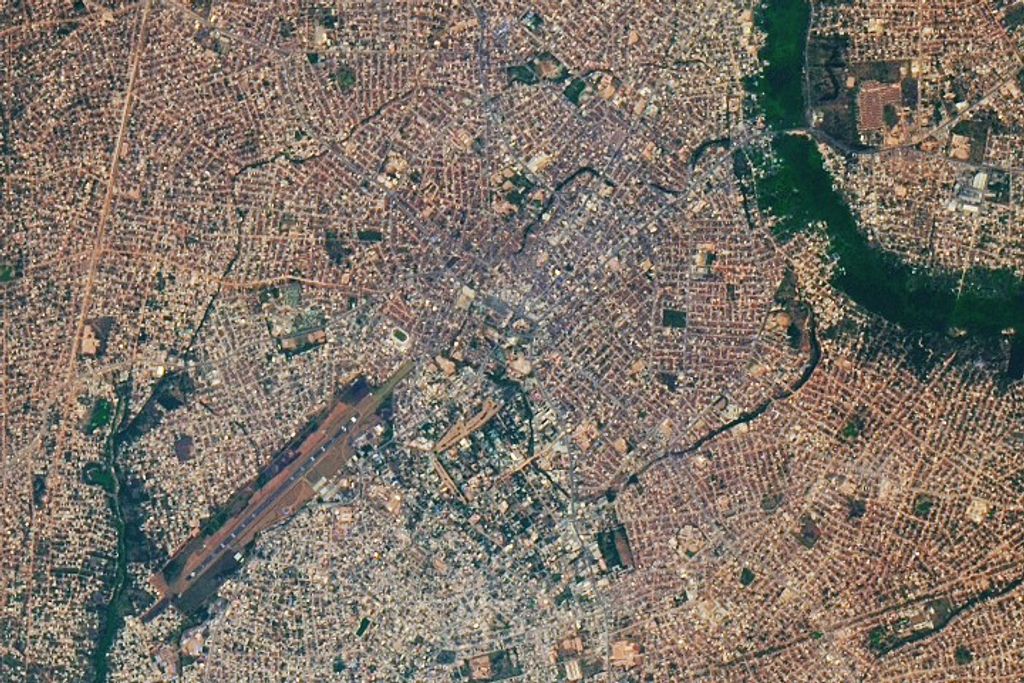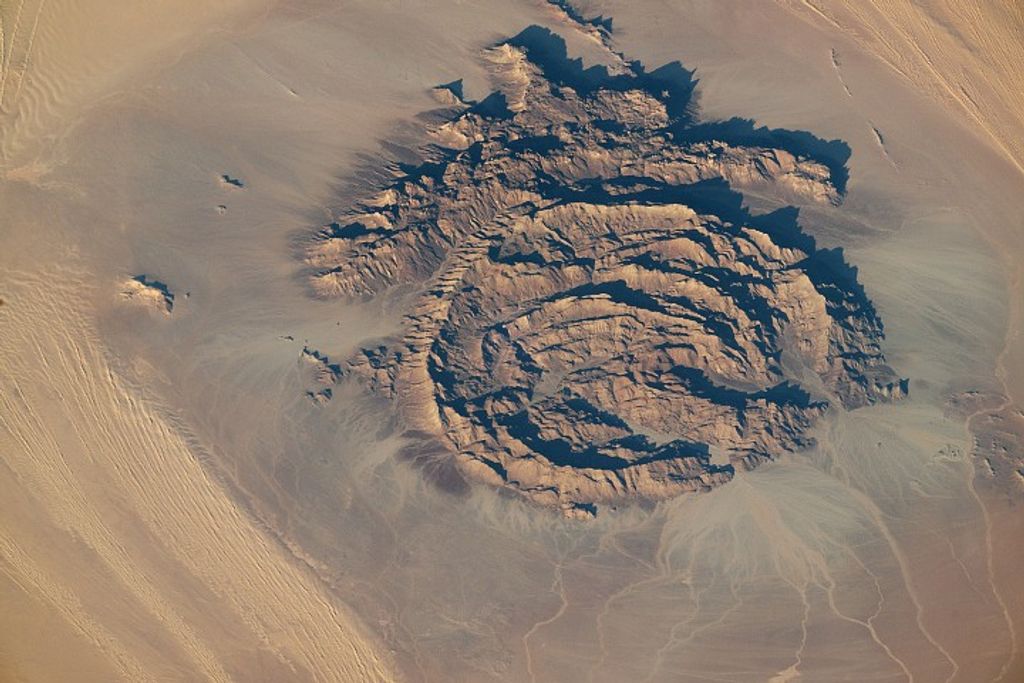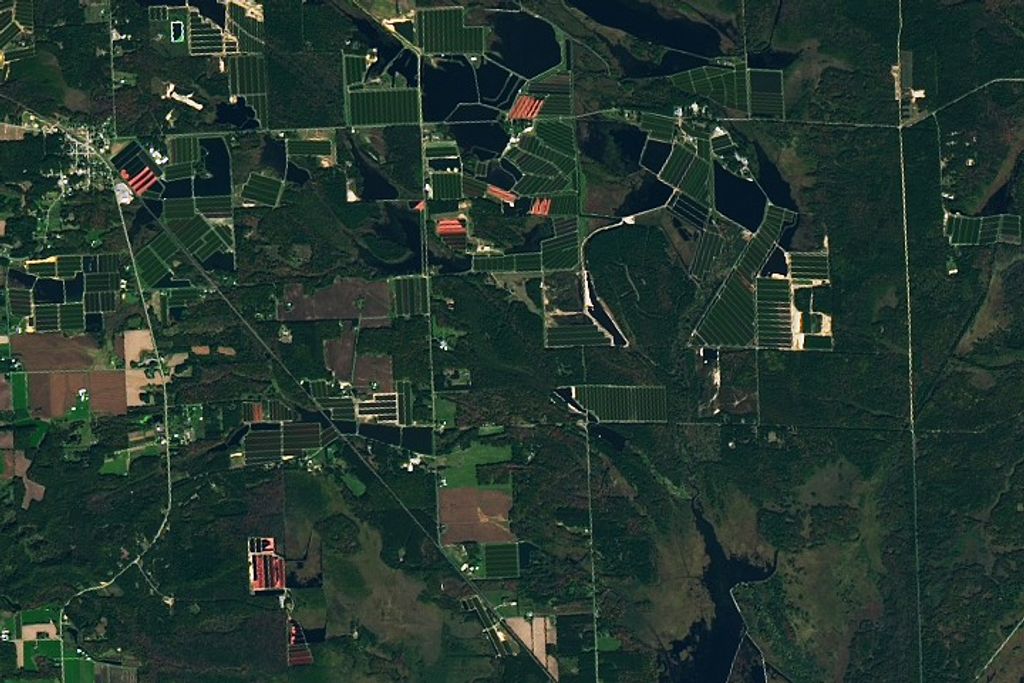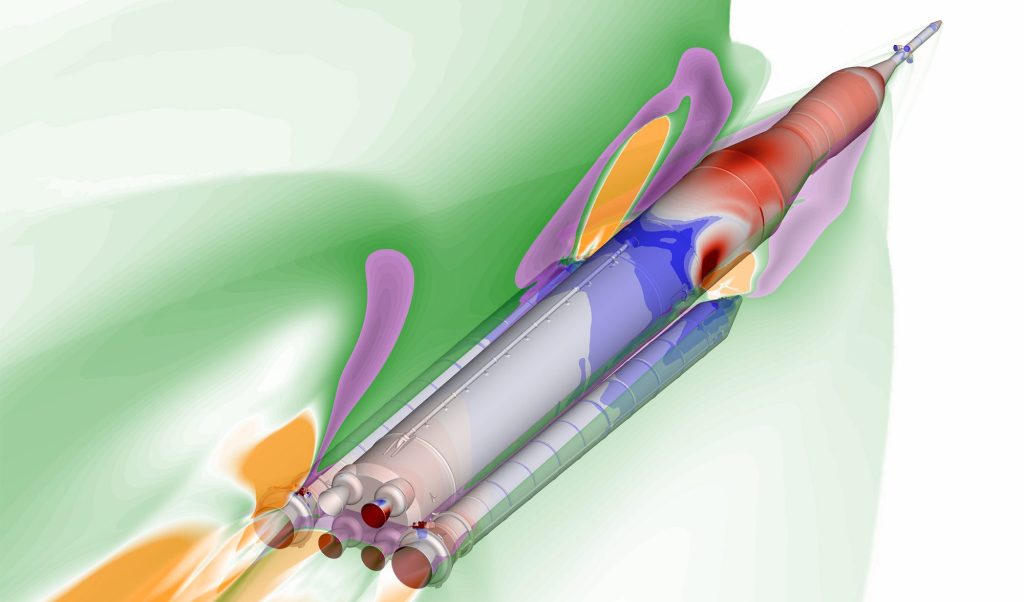1 min read
Hubble’s Black and White View of the Universe

Contained within the most massive and active star-forming region in the nearby galaxy, the Small Magellanic Cloud, star cluster NGC 346 delivers energetic radiation that excites nearby gas, causing it to glow. The result is one of the most dynamic and intricately detailed images of a nearby star-forming region that has ever been taken with NASA's Hubble Space Telescope.
The complexity of the gas and dust that surrounds NGC 346 shows a series of arched, ragged filaments and a distinct ridge created when high-energy radiation from the young, hot stars eats into the denser areas of the nearby interstellar medium. The intricate, dark beaded edge of the ridge, seen from Hubble's perspective in silhouette, contains several small dust globules that point back towards the central cluster.
Energetic outflows and radiation from hot young stars are eroding the dense outer portions of the star-forming region, formally known as N66, exposing new stellar nurseries. The diffuse natal parts of the nebula block the energetic outflows from streaming away from the cluster, leaving a series of filaments marking the path of the outflows.
This image of NGC 346 and its surrounding star formation was taken with Hubble's Advanced Camera for Surveys in July 2004 using a filter which isolates light emitted by hydrogen gas. Individual images from Hubble's cameras retain no color information as such, other than the color of a filter, which selects a range of wavelengths from the full spectrum of light. A black and white (monochrome) image most realistically represents the range of brightness in such a single image. Color images may be reconstructed by combining several images made through different filters and assigning a distinct color to each image. Even without the added color dimension, the wide range of gray tones in the black and white image reveals a great deal of the nebula's finely detailed structure.
About the Object
- R.A. PositionR.A. PositionRight ascension – analogous to longitude – is one component of an object's position.00h 59m 17.99s
- Dec. PositionDec. PositionDeclination – analogous to latitude – is one component of an object's position.-72° 10' 48.0"
- ConstellationConstellationOne of 88 recognized regions of the celestial sphere in which the object appears.Tucana
- DistanceDistanceThe physical distance from Earth to the astronomical object. Distances within our solar system are usually measured in Astronomical Units (AU). Distances between stars are usually measured in light-years. Interstellar distances can also be measured in parsecs.210,000 light-years away (64,000 parsecs)
- DimensionsDimensionsThe physical size of the object or the apparent angle it subtends on the sky.This image is 4.7 arcminutes (280 light-years or 87 parsecs).
About the Data
- Data DescriptionData DescriptionProposal: A description of the observations, their scientific justification, and the links to the data available in the science archive.
Science Team: The astronomers who planned the observations and analyzed the data. "PI" refers to the Principal Investigator.The Hubble image was created from HST data from proposal 10248: A. Nota (STScI/ESA), M. Sirianni (STScI/ESA), E. Sabbi (STScI), M. Tosi (INAF - Bologna Observ.), J.S. Gallagher (Univ. of Wisconsin), M. Meixner (STScI), M. Clampin (GSFC), S. Oey (Univ. of Michigan), A. Pasquali (ETH Zurich), L. Smith (Univ. College London), and R. Walterbos (New Mexico State Univ.). - InstrumentInstrumentThe science instrument used to produce the data.HST>ACS/WFC
- Exposure DatesExposure DatesThe date(s) that the telescope made its observations and the total exposure time.July 2004
- FiltersFiltersThe camera filters that were used in the science observations.F658N (H-alpha)
- Object NameObject NameA name or catalog number that astronomers use to identify an astronomical object.NGC 346
- Object DescriptionObject DescriptionThe type of astronomical object.Cluster and Nebulosity in the Small Magellanic Cloud
- Release DateNovember 10, 2005
- Science ReleaseYoung Stars Sculpt Gas with Powerful Outflows
- CreditNASA, ESA, and The Hubble Heritage Team (STScI/AURA); Acknowledgment: A. Nota (STScI/ESA)

Related Images & Videos

Young Stars Sculpt Gas with Powerful Outflows in the Small Magellanic Cloud
This is a Hubble Space Telescope view of one of the most dynamic and intricately detailed star-forming regions in space, located 210,000 light-years away in the Small Magellanic Cloud (SMC), a satellite galaxy of our Milky Way. At the center of the region is a brilliant star...
Share
Details
Claire Andreoli
NASA’s Goddard Space Flight Center
Greenbelt, Maryland
claire.andreoli@nasa.gov





























